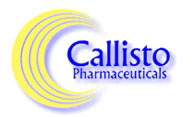Overview
L-Annamycin was originally developed at the M.D. Anderson Cancer Center to address the clinical limitations associated with current anthracycline drugs (such as doxorubicin) that are used to treat cancer. Anthracyclines, such as doxorubicin and daunarubicin, despite their broad use to treat a number of cancers, have clinical drawbacks limiting their use. Generally, patients become resistant to these drugs and once they relapse are found to be refractory to further use. In addition, the drugs produce cumulative cardio-toxicity (heart damage) which impedes their further use. In animal models, L-Annamycin has shown a very favorable cardio-toxicity profile, and an ability to circumvent the development of resistance to the drug, as well as a very good delivery profile.
Clinical development
In a previous Phase I/IIa trial in refractory acute leukemia patients, L-Annamycin showed encouraging potential in highly-pretreated relapsed patients who were shown to have multi-drug resistant tumors, a condition that normally predicts a lack of anthracycline activity. A Phase I/IIa trial in adult relapsed acute lymphocytic leukemia (ALL) patients started in December 2005 and is currently ongoing. A PhaseI/IIa trial to treat children and young adults with refractory or relapsed ALL or acute myelogenous leukemia (AML) was started in February, 2007. This trial utilizes POETIC (Pediatric Oncology Experimental Therapeutics Investigators Consortium), a consortium of prestigious pediatric cancer centers that focuses on early clinical development of promising therapies for the treatment of children, adolescents and young adults with cancer. L-Annamycin has been given orphan drug designation to treat both ALL and AML by the FDA.
Pediatric leukemia
Pediatric leukemia is the most prevalent cancer among children up to the age of 19 in the U.S. Approximately 3200-3500 new cases of leukemia in children and adolescents were diagnosed in the U.S. in 2006, with ALL accounting for approximately 75% of these new cases, AML for approximately 20% and CML less than 5% of new cases. Notably, survival rates in children have improved significantly in the last decade but there are a significant percentage, approximately 20% of ALL and 50% of AML patients, who do not remain in remission and require further treatment. Patients with relapsed or refractory acute leukemia who have prior treatment with approved chemotherapeutics generally have a poor prognosis at this point in the disease and are in need of new agents.
